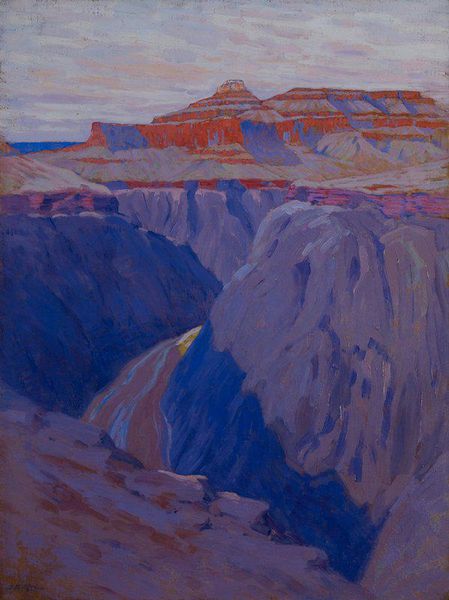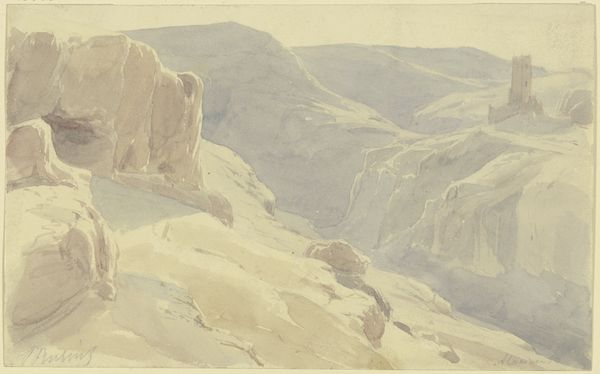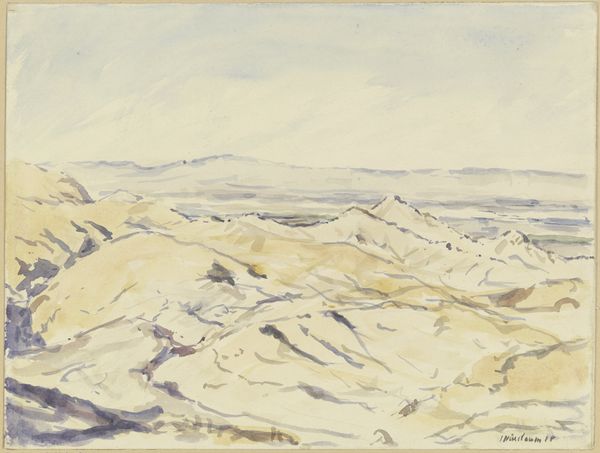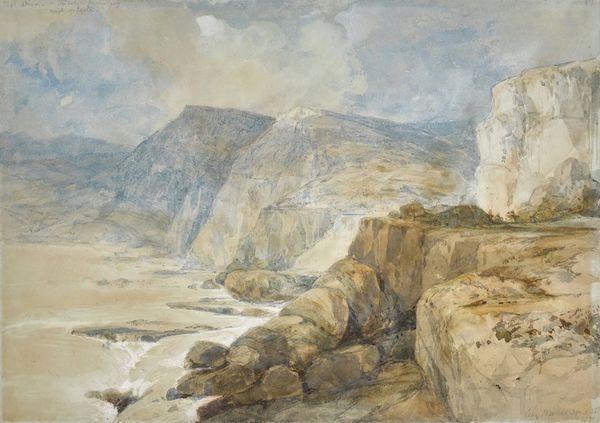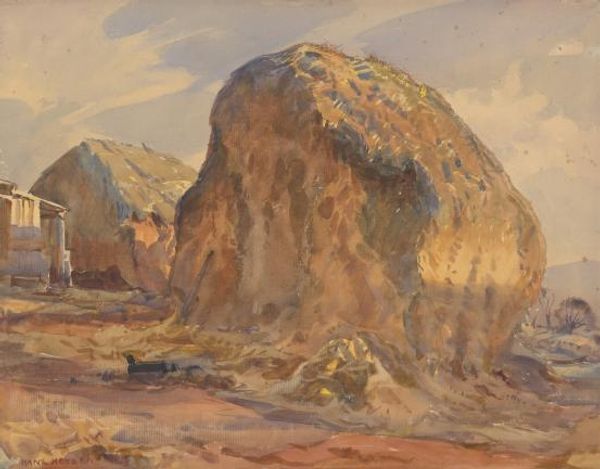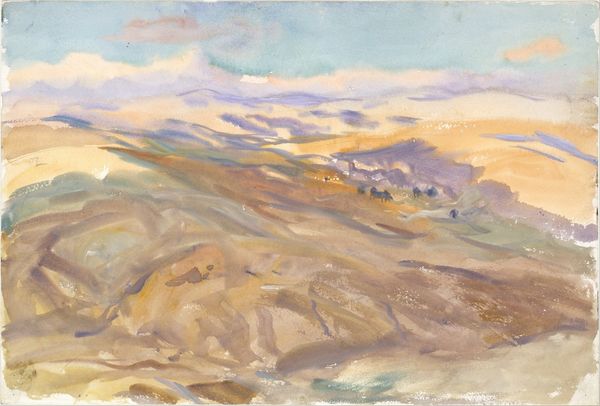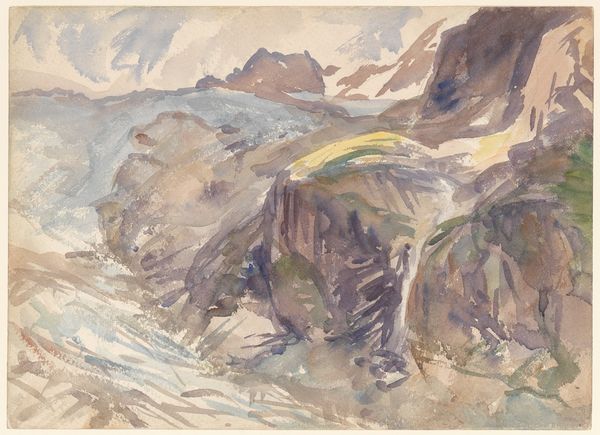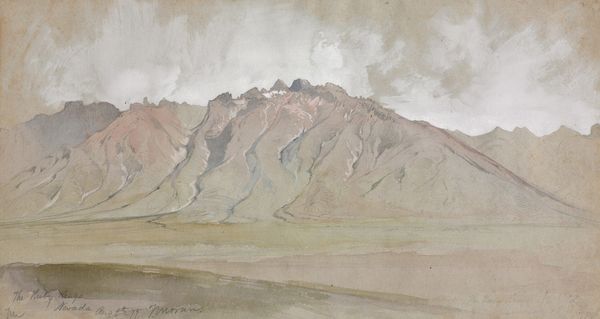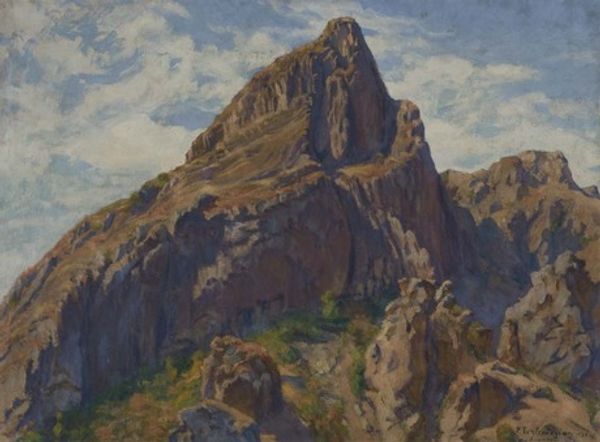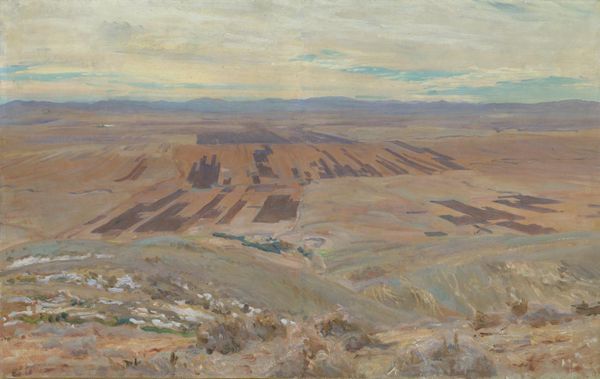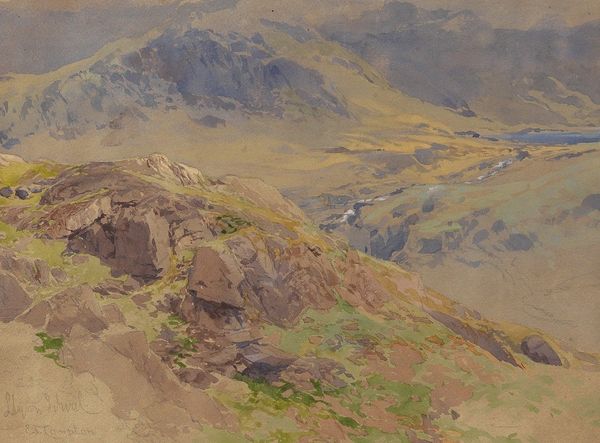
plein-air, oil-paint
#
impressionism
#
plein-air
#
oil-paint
#
landscape
#
oil painting
#
orientalism
#
watercolor
Copyright: Public Domain: Artvee
Curator: Sargent's "Cliffs at Deir el Bahri, Egypt", painted around 1890, gives us a sun-drenched vista in oil. What are your first impressions? Editor: Stark. Beautiful, but with a looming sense of... fragility. It feels precarious, almost on the verge of crumbling, the colours reflecting desert heat. Curator: Yes, the ochre palette and broken brushstrokes definitely capture the arid atmosphere. Painted en plein air, it reflects Impressionistic techniques adapted to an orientalist vision of North Africa. Do you think Sargent's rendering holds an accuracy in its cultural sensitivity? Editor: That’s where it gets complex, doesn’t it? On one hand, he’s engaging with a real place and light. But the "orientalist" lens… how does that aesthetic choice shape or perhaps even distort the image? Is he exoticizing? Does the work acknowledge any sense of imperialism or domination inherent to his position as a white, Western artist in Egypt? Curator: Indeed, this tension exists in many works produced by Western artists traveling to the Middle East during that period. There's this aesthetic interest intertwined with the power dynamics of colonialism. Yet, Sargent did seem more concerned with directly observing the play of light on the landscape than imposing a grand narrative. Editor: Maybe. The emptiness in the scene gives me pause. Is that intended as "picturesque emptiness" for the Western gaze, erasing local presences, or can it invite reflections on the sheer scale and geological age, or historical value of the place? Also I’m struck by that small touch of greenish blue far in the background — a visual echo of life and hope that stops the aridity becoming overwhelming. Curator: The contrast certainly highlights that aspect. Consider that his artistic circles back home would likely not possess intimate understandings of Egyptian culture. It served as a mirror, perhaps, for their notions of beauty and the sublime. Editor: True. Looking at it through that lens—pun intended—the painting can serve as an important artifact, demonstrating a network of exchange and historical baggage. It pushes us to look more critically at what these images really communicate beyond surface appearances. Curator: Precisely. This single landscape opens up into a broader reflection on art's role in shaping and reflecting cultural encounters. Editor: Yes, and underscores the need to constantly question the perspectives embedded within these artworks. Even the most beautiful scenes carry their histories within them.
Comments
No comments
Be the first to comment and join the conversation on the ultimate creative platform.
